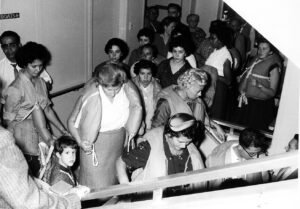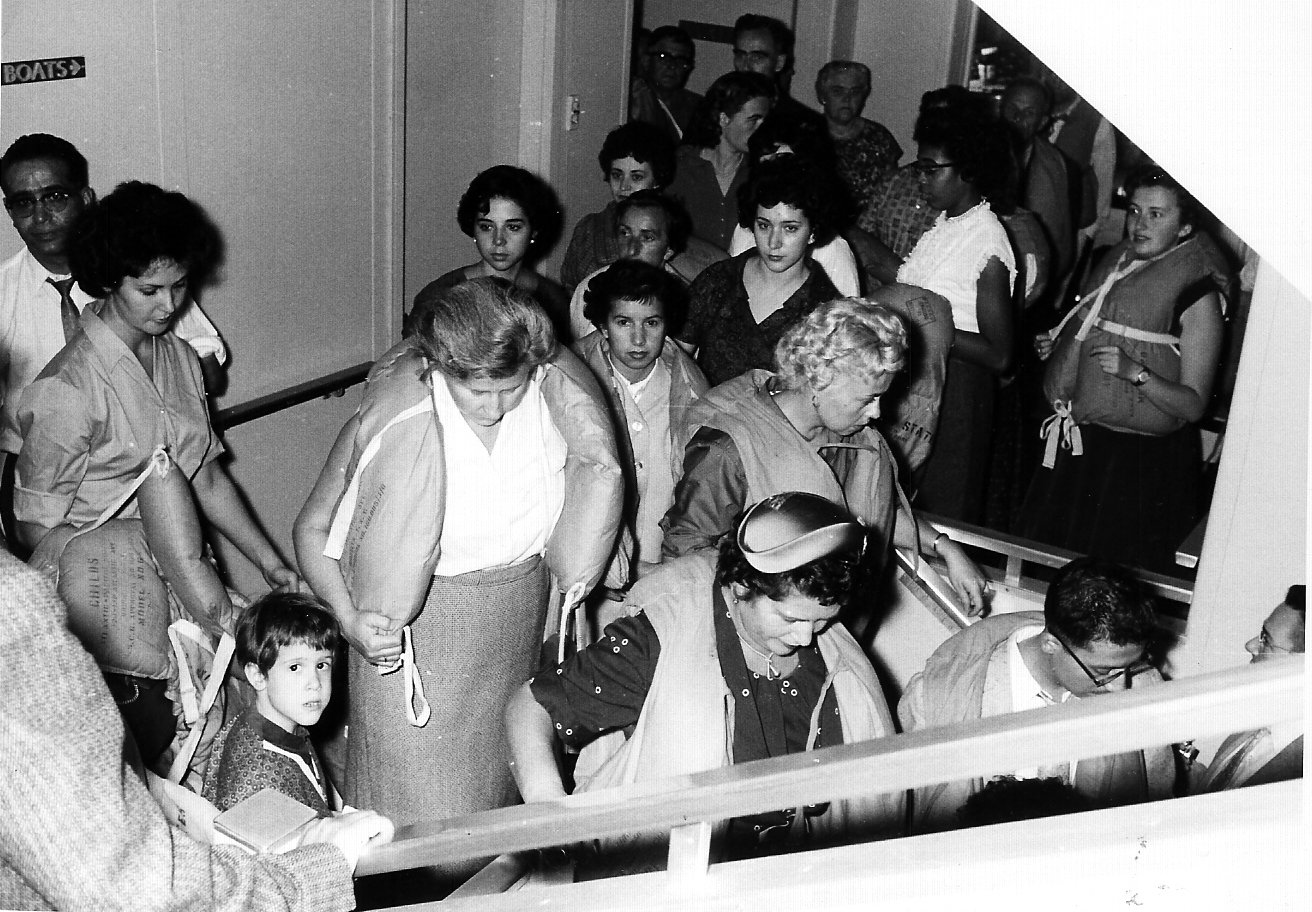 This photo is of a practice evacuation drill on the SS United States in 1959. My mother, sister, brother and I were on our way to England to visit relatives and friends. You can see my mother to the left, with dark hair, and my sister in front of her. My brother and I are behind her, hidden by the other passengers around us.
This photo is of a practice evacuation drill on the SS United States in 1959. My mother, sister, brother and I were on our way to England to visit relatives and friends. You can see my mother to the left, with dark hair, and my sister in front of her. My brother and I are behind her, hidden by the other passengers around us.
All on board are in good spirits, it seems, but a true evacuation would be traumatic. This April will mark 111 years since the Titanic ran aground and sank, but I’m thinking about another ship that sank six years later, in 1918, where all passengers aboard perished in the sea.
The SS Princess Sophia was a steamer ship that ran tourists and workers back and forth between British Columbia and Alaska. On October 23, 1918, it had 75 crew members and 268 passengers on board, including families of those serving in World War I, miners, and sternwheelers, as well as fifty women and children. The steamer was three hours behind schedule when it departed Skagway, Alaska on its way to several ports along the Alaskan coast and British Columbia. As in the case of the Titanic six years earlier, the Sophia ran into bad weather. Only instead of an iceberg delivering the fatal blow, it was the Vanderbilt Reef in the Lynn Canal.
Upon running aground on the rock, a distress call was immediately sent, but wireless was weak in those days. The furthest the call reached was Juneau, where rescue boats went into action. Unfortunately, it was a race against time, made more perilous by an incoming storm and high tide. In addition, damage to the hull caused the Sophia to quickly take on water. It was decided by the Captain and those on the rescue boats that it would be safer to wait until daylight when the weather was supposed to improve, before attempting any kind of rescue.
Unfortunately, the weather grew increasingly worse, and the Sophia sent out an SOS that it was sinking. By the time the rescue boats were able to get close, the steamer was no where in sight.
No one witnessed the actual sinking of the Princess Sophia, so details of its last moments are only conjecture. Although many on board wore lifejackets, there appears that there was no time for an organized evacuation. Curiously, 100 people were still in their cabins below deck. Many may have died when the boiler exploded, while others may have perished from choking on oil fuel, or while waiting in the cold waters.
Months later, bodies of passengers continued to wash ashore, both north and south of Vanderbilt Reef. Many were covered in oil, making identification more difficult. Although today a lawsuit would seem to be a slam dunk, legal action against Canadian Pacific Railway, the company that ran the steamship, was unsuccessful.
Many aboard seemed aware of their fate, however, as evidenced by several letters to loved ones found on some of the bodies. Perhaps this is because of two previous catastrophes along the same route in 1904 and 1910, in which many on board drowned.
Looking at the old photo from 1959, I am well aware of what can happen at any place and any time. None of us is special. God takes when conditions are right.

Comments (0)